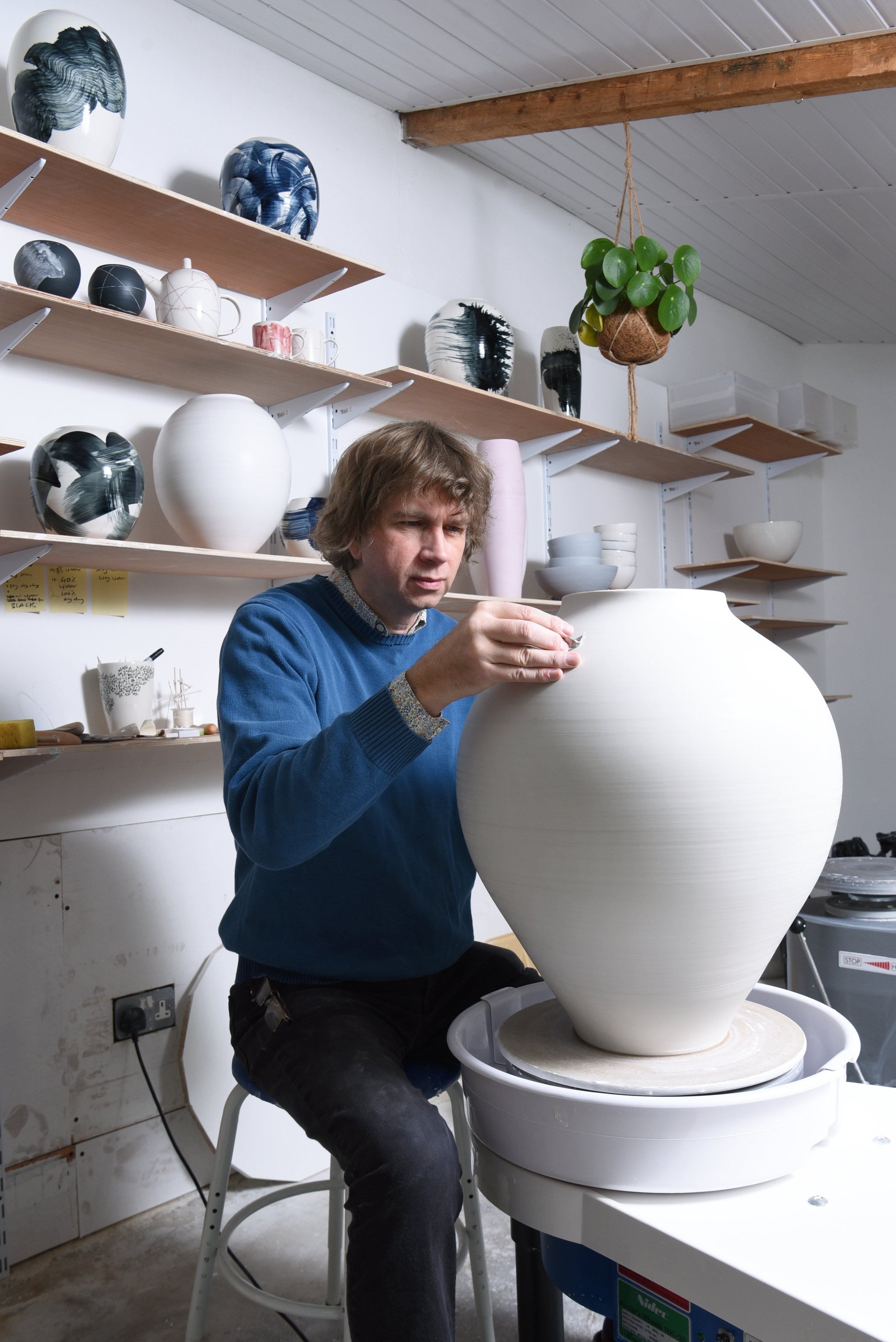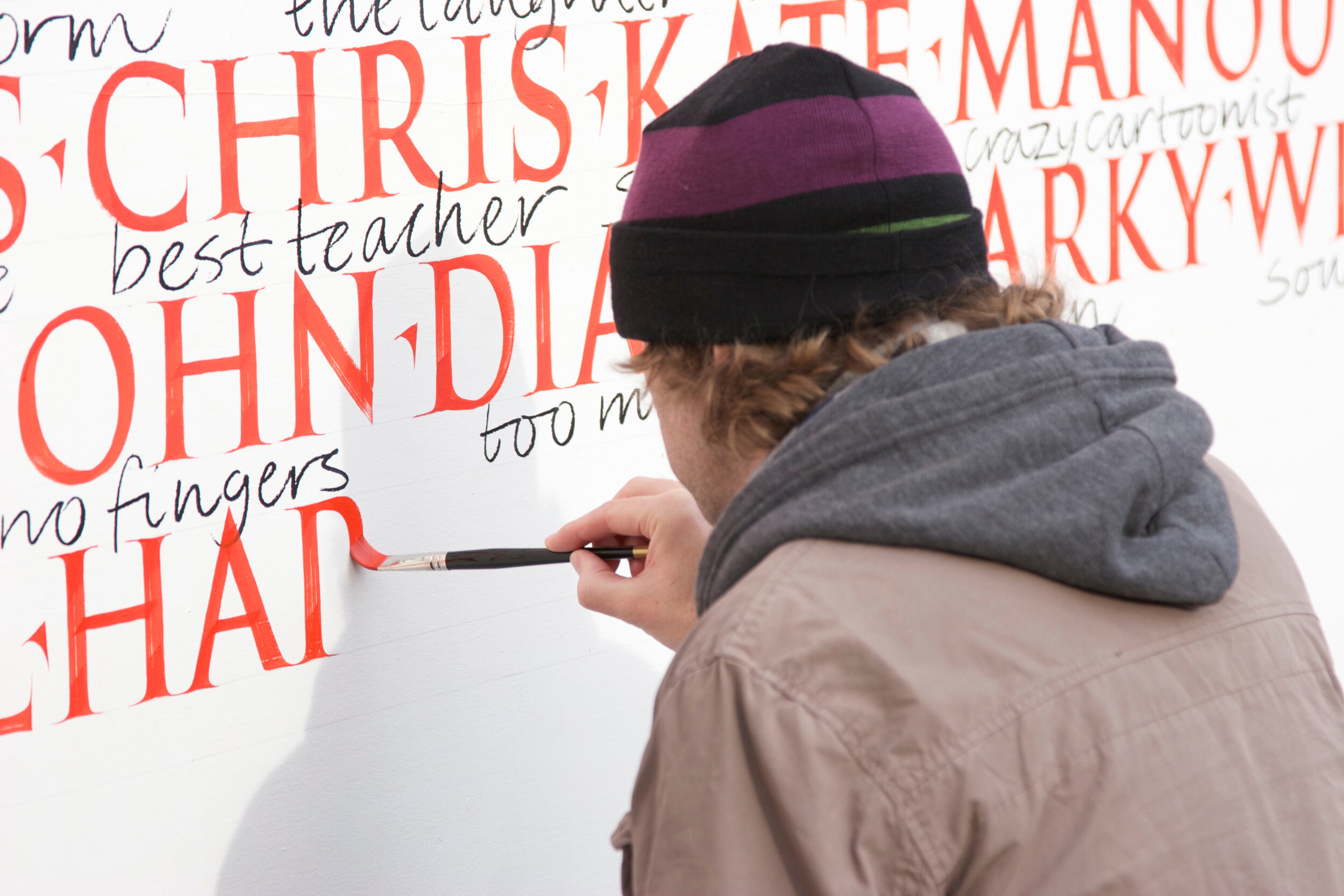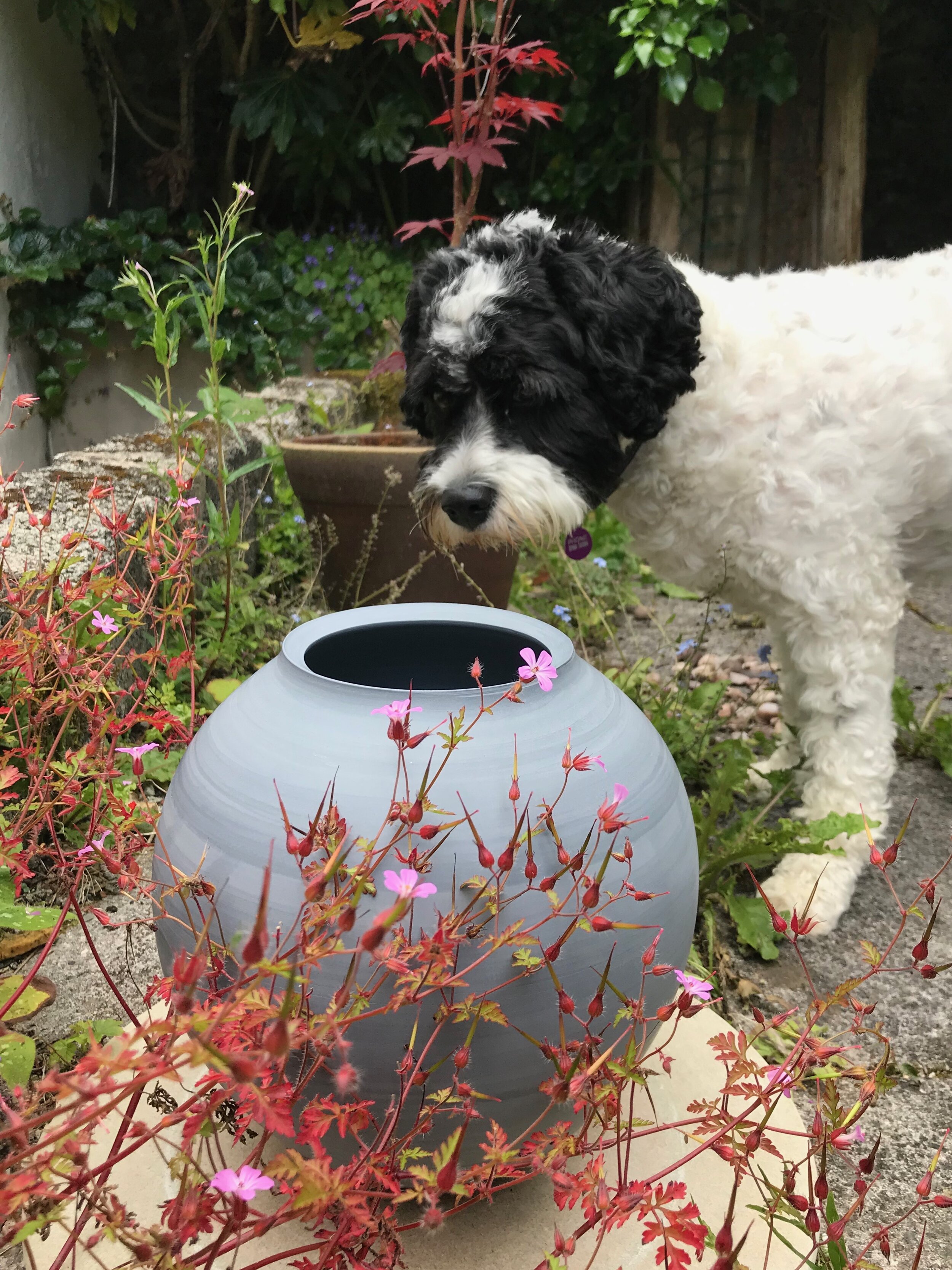I work with porcelain, making large vessels and ‘writing’ on them usually with single brushstrokes.
I ‘throw’ these vessels on a potter’s wheel (the word ‘throw’, here, is from an old English word, thrawan, meaning to twist or turn. Perhaps that’s why we use the word ‘throw’ for chucking things a long way: a javelin travels further and more accurately if it’s given a twist just before it launches).
The vessels are surfaces on which I then write marks. These strokes are made swiftly and contain a huge amount of information about the way my body works during these few seconds.
These are some of the brushes I use. They are square-cut at the end and deliberately mimic the shape of pens used for thousands of years across the middle east and europe.
Brushes with this shape were used throughout the Roman empire to write inscriptions on buildings; the letters were almost always carved to preserve the formal writing. As a card-carrying nerd I learned all I could about this way of writing, published a textbook and continue to teach workshops around the world.
Over the years, I developed a deep interest in writing and what it was as a graphical, physical, real-time manifestation of us trying to make something very precise and meaningful.
I’ve used many different tools for writing, trying to exclude any language, concentrating on the movements and graphical and bodily relationships. Showing the universality of writing, way beyond any particular script or literature.
The computer came into it at various points. For example, I programmed a universe of small, interacting brushes to let me vary the laws of physics to see how writing might change.
There is a thread here. The 3D surfaces I make now are the latest angle I’m using to track down writing. There is necessarily a craft involved in the understanding of writing, a repetitive training of the body to deliver precise, controlled strokes. When I first sat at a wheel to make a bowl, I was, like every other beginner, rubbish. But something about the clay being formed in real-time, about the precision required, about the lack of editing and just letting the form be what it became.. all of this felt just like the calligraphic principle I’d been pursuing for so long. Here was another way of recording the time it takes to make a form, within the form itself.
There’s an interesting and ancient history of writing on ceramic vessels and I’m currently making a claim to join that tradition.
And I have a skeptical critic to keep me on the straight and narrow.









